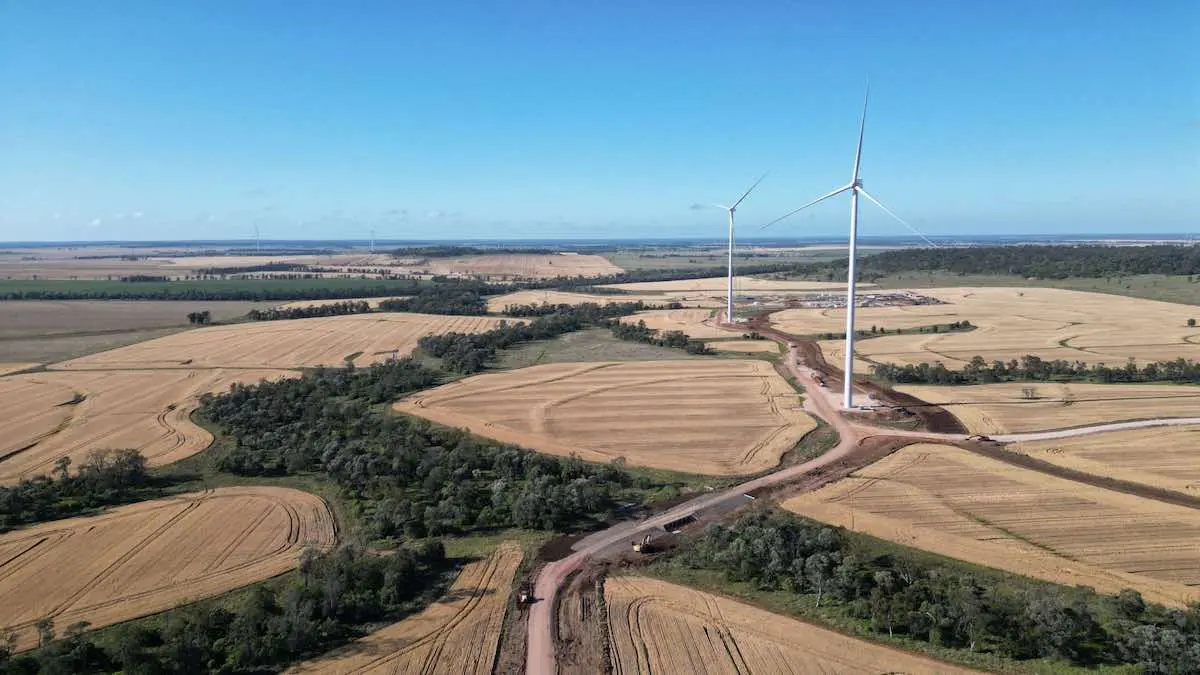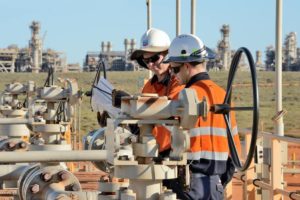Queensland Labor has announced a review of the rules governing wind farm development in the state, in a move it hopes will strengthen protections for communities and the environment while also providing certainty and clarity for industry.
The Palaszczuk government said on Wednesday it is conducting a review of the Wind Farm Code (State Code 23) and its accompanying guidelines as it gears up to meet state targets of 70% renewable energy by 2032, and 80% by 2035.
The review aims to amend the code to better protect areas of high ecological and biodiversity value, identify viable haulage routes upfront, bring acoustic criteria up to date with best practice, highlight rehabilitation requirements and look more closely into wind farm development impacts – both good and bad – on local communities.
“We want to strike the right balance as our clean energy transformation continues,” said state energy minister Mick de Brenni in a statement.
“It’s a necessary step to build certainty and confidence of the community, industry and investors in clean energy projects.
“Improving co-existence of renewable energy projects with other land uses, in particular those with strong environmental and agricultural values will benefit all parties.”
As RenewEconomy has reported, Queensland has been playing catch-up on wind energy generation, with the 180MW Mt Emerald wind farm the first truly large-scale project to join the state’s grid in 2018.
Since then activity has ramped up, with the additions of the 453MW Cooper’s Gap wind farm, the Kennedy renewable energy park, and more recently the 157MW Kaban and the 173MW Dulacca wind farms, although not all projects are operating at full capacity, yet.
The country’s biggest wind project to date, the 1.02GW McIntyre wind project is now under construction, as is the 450MW first stage of Andrew Forrest’s Clarke Creek wind project – albeit with some difficulties and interruptions to works.
Others in the pipeline include the Mt Hopeful and Tarong West wind farms, as well as the 400MW Moonlight Range wind farm being developed by Australian developer Greenleaf Renewables in partnership with the renewable energy arm of Canadian investment giant Brookfield.
All told, there is a great deal of wind energy in the development pipeline for Queensland, but – of course – not everyone is happy about every project.
Ark Energy’s 600MW Chalumbin wind farm, proposed for near Ravenshoe in the state’s far north, has been particularly controversial, in part due to the project’s proximity to the adjacent Wet Tropics World Heritage Area.
The massive project was last year whittled back to less than half its original size, after 114 of the 200 turbines initially proposed were cut from the plan to avoid sensitive ecological and cultural heritage sites.
The project has a dedicated community group set up in opposition to it, called Stop Chalumbin Wind Farm, and well known anti-renewables politicians (Bob Katter, Gerard Rennick) and professional agitators – most notably Nick Cater – have happily jumped on the band wagon, claiming this to be a battle of renewables vs nature and traditional owners.
So dedicated is Cater to the cause of stopping Chalumbin, he has travelled to Ravenshoe to report from the eye of his imaginary storm, including tramping through the bush to expose a wind turbine blade graveyard (that turns out to be the blades from Queensland’s first ever wind farm, the 12MW Windy Hill project, being stored on the private property of a plant and machinery hire company, under contract.)
Last week he wrote an op-ed in The Australian claiming that the Ark Energy wind farm will become Australia’s new Franklin Dam. And he’s ever so concerned about the plight of the first peoples of Ravenshoe even if he can’t spell their name correctly.
For all the talk of an Aboriginal Voice, no one seems to be listening to the Jarrbal Peoplehttps://t.co/RypUjmU3gH
— Nick Cater (@nickcater) July 30, 2023
But the traditional owners of the land on which the project is being built, the Jirrbal People, are far from united against the project.
Jirrbal elder Brad Sam-Go, took out a full page in a range of Murdoch newspapers over the weekend declaring his support for Chalumbin wind farm and calling out “misinformation being spread in the media.”
“The company has been working with us since 2019 to ensure they are respectful of Jirrbal Peoples’ connection to this area,” Sam-Go wrote.
“The project is a win-win as we get local jobs on country and the environment gets a win too.
“If people want to oppose the wind farm for valid reasons they should be honest about it,” he continues. “But don’t misrepresent the truth and don’t misrepresent the views of the majority of the Jirrbal People. Our voice is our own.”
An image of the newspaper ad was posted on Facebook by Queensland LNP Senator Gerard Rennick, who as well as being vehemently anti-renewables is also a climate and Covid-sceptic.
And while Chalumbin is one project in one state, the opposition to it is symptomatic of both the levelling up of renewable energy development in Australia, and of the coincident renewed conservative political pushback against renewables in both New South Wales and Queensland.
As RenewEconomy has reported, a determined campaign from conservative voices is once again rallying against the transition to renewables, to slow the closure of coal-fired generators, and to push for nuclear power instead.
In NSW, former Nationals leader Barnaby Joyce leads the push, including through a direct role recruiting farmers to protest against the “onslaught” of wind, solar and transmission lines at the Murdoch media sponsored Bush Summit next month.
Queensland, which has a huge job ahead of it in the transition away from coal, is obviously taking note.
“Queensland has some of the world’s best wind resources that can be harnessed to power hundreds of thousands of homes with cleaner and cheaper energy,” said Deputy Premier Steven Miles on Tuesday.
“Wind farms in Queensland already undergo a thorough assessment process.
“This review is designed to strengthen those protections for communities and the environment, while creating certainty and clarity for industry with clearer benchmarks for managing environmental and construction impacts.”










